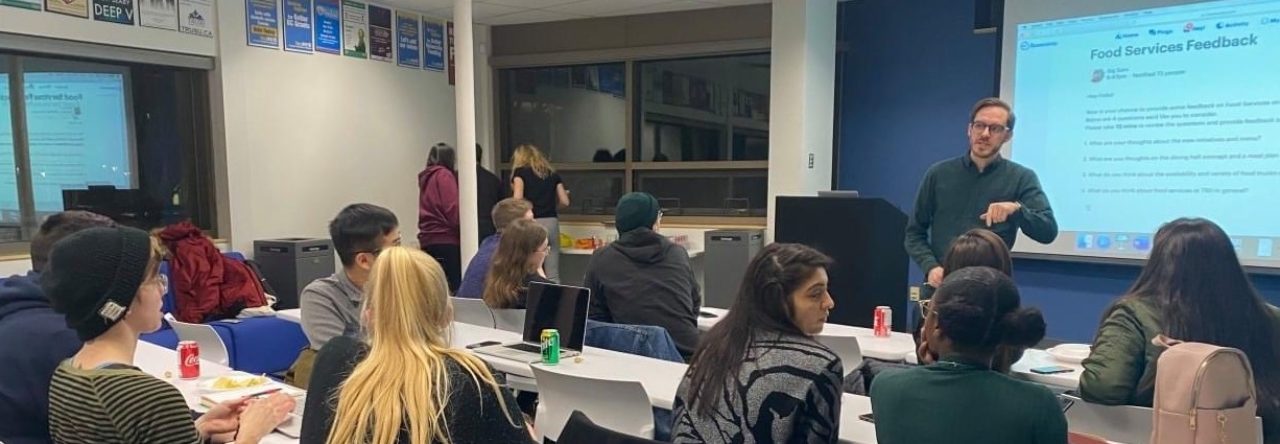On July 22, 2020, I taught, with my teaching partner, my eighth one-hour lesson with a group of four students enrolled in an Advanced Oral Communication class. The objective of this lesson was that students would be able to persuasively express opinions on topics of workplace culture using target vocabulary and discussion language. This was to be accomplished through a game to review workplace vocabulary terms introduced in the previous lesson. Production of a provided dialogue would then have students make communicative use of the vocabulary as assessed through comprehension questions. Finally, students would competitively debate topics about workplace culture judged on use of target vocabulary terms and discussion language as well as persuasiveness. This lesson successfully (re)applied what we had learned about focused objectives and spending adequate time on fewer activities. In doing so, it offered an opportunity to build new skills in facilitating students engaged in active communication.
In preparing the lesson plan, we began again from content and activities that carried forward from the previous lesson. We had been addressing the topic of work culture for the previous two lessons, and had included a weak debate in first and did not get to debates planned for the second. This left us with a clear objective to address and confidence to plan a limited set of focused activities to achieve it. Students had been introduced to related vocabulary in the previous lesson, so we took the opportunity to make a game to serve as both a warm-up and a review activity. I created a custom Kahoot! quiz that provided very focused review of the terms. We also took the opportunity to review a previously planned practice dialogue and applied the lesson of overly complex materials from the previous lesson. We greatly simplified and shortened the dialogue and altered it to use target vocabulary terms in contexts that demonstrated their meaning clearly. We further added comprehensions questions for greater engagement and for assessment purposes. Finally, we planned the primary debate activity in greater detail, setting out a clear gamification model, providing time for teams to formulate positions, and setting out roles for each teacher (including the sponsor teacher as guest judge!) It was helpful to recognize that this lesson plan was shorter and simpler than many other was had made, but was significantly better designed.
In delivering the lesson, we realized many benefits from the plan, but also had a number of areas for improvement. Overall, I think I remained a bit nervous about the simplicity of the lesson and felt compelled to fill it out with teacher talk. This began with a detailed overview of the lesson, but fell away with the warm-up game as the preparation paid off. The game was fun and the detailed quiz answers allow for meaningful engagement with the vocabulary terms. We also delivered the practice dialogue well. Splitting into two pairs allowed each of us to fully engage all the students. I felt comfortable providing error correction and facilitating the comprehension questions. Finally, the competitive debate was also largely successful. We introduced the format very well and the plan to provide teams opportunities to formulate arguments with the help of one teacher each also allowed for fulsome engagement and direction on discussion structure and language. However, we struggled to facilitate the debates themselves. For me, this was largely a conflict between not wanting to interrupt students engaged in meaningful communication and needing to manage time and give all students opportunities to speak. Afterward we discussed options with our sponsor teacher such as using a timer or providing structure through opening statements, rebuttals, etc. This was helpful in becoming familiar with facilitation of this kind. The main mistake we made throughout the lesson, however, was a lack of clear roles between the teachers. For example, in the debates, we were supposed to take turns facilitating and judging, but ended up doing a bit of both at the same time. This added confusion to managing the activity.
Overall, this lesson was a rediscovery of consistent improvements from throughout my practicum: focused objective, clear activities, and generous timing. I’m also pleased that we added to that a greater level of scaffolding, purpose-built materials, and opportunities for assessment and correction. We were victims of some success in that we struggled to facilitate where students were speaking too much! This goes to show that in every way that a lesson goes according to plan, there is always something else to improve. It is encouraging to identify those opportunities in the context of progress against those I’ve recognized already.


Leave a Reply